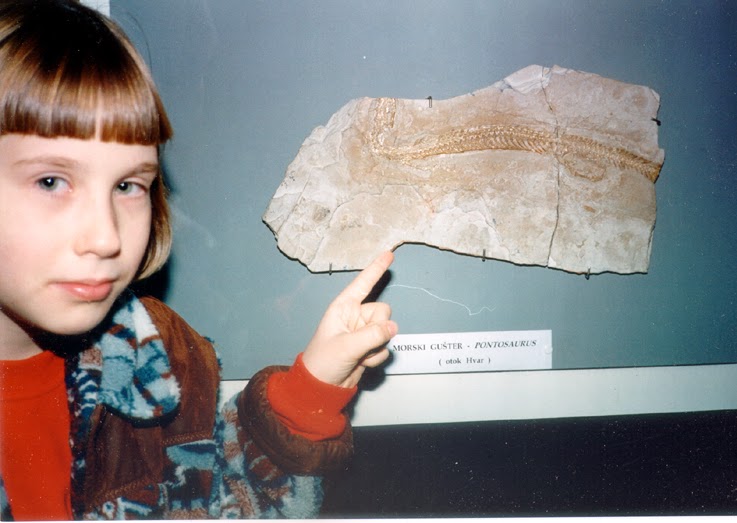If you look carefully at the photographs I have shot on a Pula beach you'll probably notice puzzling feature in giant Early Cretaceous sauropod tracks (Brontopodus). It appears that the footprints of the front feet (manus) were closer to the mid-line of the animal's body than the footprints of the hind feet (pes). The pes length impression is about 105 cm.
Is this the right manus/pes set? Notice the relatively small size of the typical crescent shape manus.The manus was preserved as an infilling (natural cast) while the pes is the true impression. In the image bellow both manus and pes were preserved as infillings (natural casts)
... and is this the left manus/pes set, or am I seeing it wrong and it's the opposite?
Anyway, if I am right, these tracks suggest that the giant Pula sauropod had very slender front limbs and very robust hind legs. The hips were much wider than the shoulders. The impressions of the front feet were often not or less preserved. The gait must have been somewhat similar to the gait of the modern giraffe, which also has a bit wider hips than shoulders so the impressions of the front feet are a tad closer to the mid body line than those of the hind feet. The longest pes print of the Pula sauropod I have found and measured was about 130-140 cm. That was some truly huge titanosaur that must have measured at least 30-35 meters in length.
Here is a link for Giraffe Walk
Is this the right manus/pes set? Notice the relatively small size of the typical crescent shape manus.The manus was preserved as an infilling (natural cast) while the pes is the true impression. In the image bellow both manus and pes were preserved as infillings (natural casts)
... and is this the left manus/pes set, or am I seeing it wrong and it's the opposite?
Anyway, if I am right, these tracks suggest that the giant Pula sauropod had very slender front limbs and very robust hind legs. The hips were much wider than the shoulders. The impressions of the front feet were often not or less preserved. The gait must have been somewhat similar to the gait of the modern giraffe, which also has a bit wider hips than shoulders so the impressions of the front feet are a tad closer to the mid body line than those of the hind feet. The longest pes print of the Pula sauropod I have found and measured was about 130-140 cm. That was some truly huge titanosaur that must have measured at least 30-35 meters in length.
Here is a link for Giraffe Walk

































































































